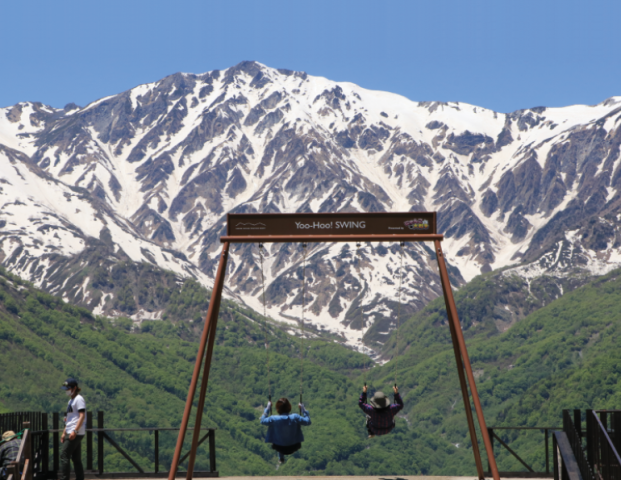There is opportunity in summer ops, according to ski area operators in Australia, Europe, and Japan, who have also identified a pressing need to grow their non-winter business as they experience variable snowfall and shortening winter seasons due to climate change.
The good news? The mountains are the perfect cool playground for folks looking to escape summer heat. Their dramatic beauty is appealing year-round. Ski areas’ existing lift infrastructure and food and beverage facilities can easily pull double duty, and four-season offerings mean year-round employment opportunities, bolstering staff retention.
Operators from outside North America shared insights with SAM about their most innovative and effective summer activities and experiences, as well as their forecasts for the future of summer operations. We could only fit a handful of their responses here. Once you are done reading about the operations featured in these pages, learn more from resorts in Norway, Montenegro, and beyond at
saminfo.com/summer-ops.
EUROPE
1. Ordino Arcalís, Andorra
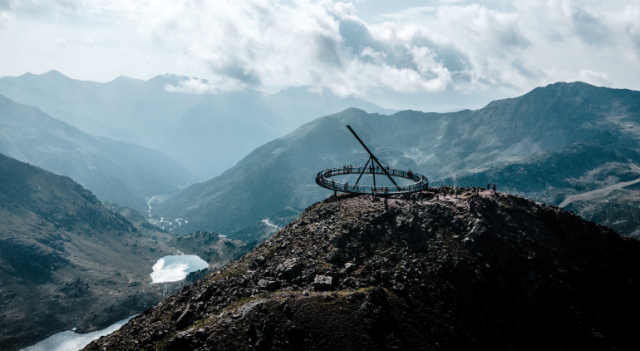
Ordino Arcalís, in Andorra, a principality in the Pyrenees Mountains between Spain and France, has been working on a strategic plan to become a year-round operation since 2018. That development plan started with the addition of a gondola with panoramic cabins, six of which have glass floors. The installation attracted around 30,000-35,000 visitors annually between the end of June and early September, says Joan Viladomat Cortabitarte, chairman of SAETDE / SECNOA, the operating company of Ordino Arcalís.
The 2021 installation of a sundial-cum-scenic overlook called the Mirador Solar de Tristaina extended the season from early June to early November and boosted summer visitation to between 70,000-85,000. The resort does more than 200,000 skier visits in the winter. “This mix results in approximately 25 percent of the revenues coming from the summer season,” says Viladomat.
In summer, the resort offers hiking, road cycling, mountain biking, restaurants, and guided experiences such as a full-moon hike, but the sundial viewpoint is the centerpiece of the operation. A circular 4-foot-wide suspended walkway at the peak of Peyreguils offers visitors a 360-degree view over the Tristaina lakes and Ordino Valley. A nearly 90-foot-long central beam with a 42.55-degree incline marks the time on the viewpoint’s circumference.
“The Mirador Solar de Tristaina has been one of the most visited attractions in the country during summer season,” says Viladomat. The attraction is accessed via the two-stage gondola (the first stage stops at a restaurant) and a chairlift. This summer, it will become the starting point for several hiking trails.
Summer is a critical area of opportunity, says Viladomat. While advanced snowmaking systems will help to “offset increasingly erratic snowfalls,” he says all investments must have a year-round focus. Multi-functional facilities such as all-season gondolas, high-end accommodation, and dining options will attract visitors during the shoulder season and reduce reliance on a single-season model, he says, adding, “Resorts will need to adapt to the changing expectations of travelers who are increasingly seeking unique experiences, environmental responsibility, and seamless, personalized service. Balancing these demands with the need to protect fragile mountain ecosystems and support local communities will be key to the long-term viability of mountain resorts.”
2. OK Bergbahnen, Germany / Austria
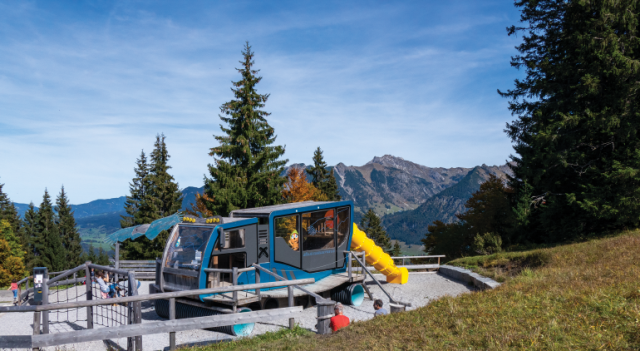
Oberstdorf Kleinwalsertal (OK) Bergbahnen, on the border of Germany and Austria, consists of seven ski areas with a shared lift ticket. While OK Bergbahnen derives 35 percent of its total revenue from non-winter business, the percentage across ski areas varies, with Nebelhorn ski area at the top end, earning 59 percent of its total revenue from non-winter business, and Walmendinger Horn-Heuberg-Ifen on the other end, with 16 percent of its annual revenue coming from non-winter business.
All of the ski areas offer restaurants and hiking in the summer, and then each has additional summer activities according to its unique character, environmental restrictions, and other factors, says OK Bergbahnen chairman Henrik Volpert.
For example, Söllereck, which earns 53 percent of its total revenue from non-winter business, offers activities like an alpine coaster, a ropes course, a play area, and one of the longest wooden marble runs in the world. Kanzelwand, with non-winter business accounting for 31 percent of its total revenue, is similarly family-oriented with a water adventure trail with waterplay stations, a playground, and a nature exhibit.
The high alpine Nebelhorn has been the focus of reinvestment recently. “The reconstruction of the summit restaurant at Nebelhorn that was combined with the implementation of the Nordwandsteig (a 100 m steel walkway at the peak) has been extremely successful,” says Volpert. Nebelhorn also offers a via ferrata, child-friendly nature walks, paragliding, and meeting facilities. Summer demand was high enough at the ski area that OK Bergbahnen recently doubled its uphill capacity with the installation of a new dual-cable gondola, says Volpert.
“We expect the summer visitation to increase steadily by 0.3-1.0 percent due to climate change because people escape from the nearby hot cities to our cool mountains,” he says. He anticipates a further boost in growth from planned new attractions, including a treetop walk, adventure golf, additional downhill biking trails, a zip line, and mountain carts.
Additionally, a unique partnership with local hotels and guest houses that pay a fee to OK Bergbahnen in order to offer guests unlimited use of the resort’s cable cars in summer “has not only increased overnight stays at our destination, it has also increased the total number of visits at our mountain, thus generating more turnover at our restaurants, especially on days with challenging weather because guests use their free ticket for accessing a restaurant on the mountain even when it’s rainy.”
3. Beitostølen Resort, Norway
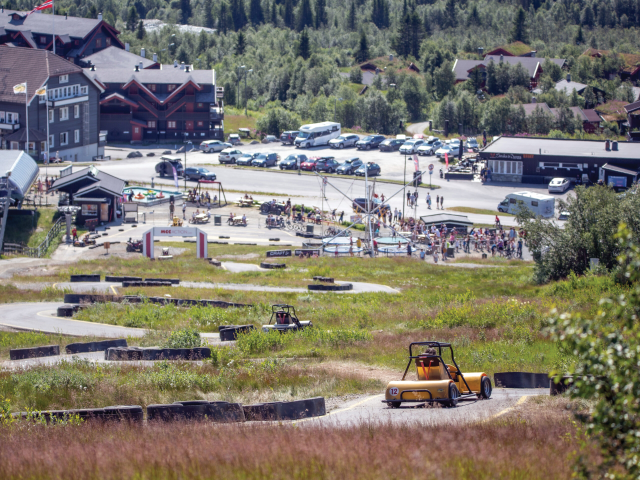
Beitostølen Resort is a family-oriented ski area with seven lifts and 16 downhill trails as well as an extensive cross-country ski trail network in a walkable mountain village in central Norway, between Bergen and Oslo. The resort offers a large menu of summer activities and experiences, some free and some paid. This mix is a key component of the resort’s summer business model. “We offer 13 free activities in order to attract more visitors to the [paid] Summer Park,” says owner and CEO Atle Hovi. Among the free offerings are a bean-bag game, a climbing wall, oversized chess, a playground, and a “space net,” as well as a popular historical walk with interpretive signs.
In the paid activity park, Hovi has continued to invest in a variety of amusement and thrill activities over the last 20 years. These include early additions like a lift-served cart racing track called Gravity Racer in 2005 and an alpine slide in 2007, as well as later installations such as a gyrotrampoline in 2018, lift-served downhill mountain biking in 2019, and a racetrack with electric cars in 2021, geared toward kids too young for the cart track in 2021. The resort sells an all-inclusive day pass as well as a la carte tickets for each activity.
Non-winter business currently accounts for 15 percent of the resort’s total revenue. A continued investment in summer activities and experiences will be critical to the operation as the length of the winter season shrinks. “Shorter winters will make summer operations crucial for attracting visitors and keeping our staff engaged,” says Hovi.
4. Val Cenis, France
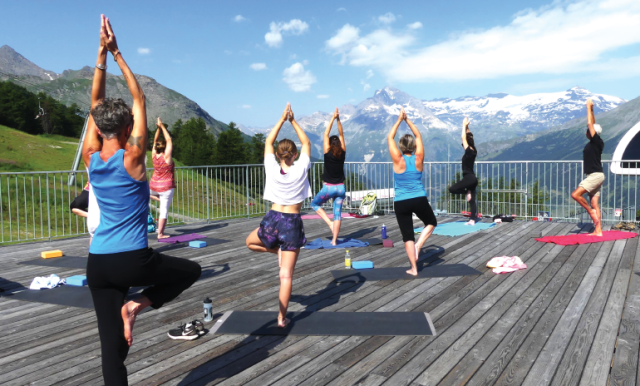
Val Cenis, in the Haute Maurienne Valley of France, between Grenoble and Turin, Italy, has 125 km (about 78 miles) of ski trails across five villages: Le Haut, Lanslevillard, Plans de Champs, Lanslebourg and Termingnon. Summer activities currently represent a minimal portion of its total revenue, says sales and marketing manager Christophe Marlière, who sees this as an indicator of the potential for further developing the resort’s summer offerings.
Currently, in summer, Val Cenis offers several family-friendly activities focused on leisure and wellbeing at the top of its Vieux Moulin gondola. These include yoga and fitness classes, as well as experiences like guided alpaca trekking. The activities, says Marlière, are designed to allow “visitors to reconnect with nature in beautiful landscapes.”
This summer, the resort also added kayak and pedal-boat rentals on nearby Lac du Mont Cenis, advertised as “cool activities” to do in the summer heat; the high-alpine lake’s water temperature does not exceed 15 degrees Celsius (approximately 60 degrees Fahrenheit). Val Cenis also began renting electric scooters from the top of the Vieux Moulin gondola “for an adventurous descent,” says Marlière. “These new activities meet the expectations of visitors looking for fun and memorable mountain experiences,” he says.
“Demand for unique and immersive experiences should increase,” he says, adding that the resort expects to keep expanding its summer operations. Among the considerations are a “focus on eco-friendly activities,” as well as “a wider range of options for families and adventure-seekers to improve the guest experience and make activities more accessible,” says Marlière.
5. Kolašin 1600, Montenegro
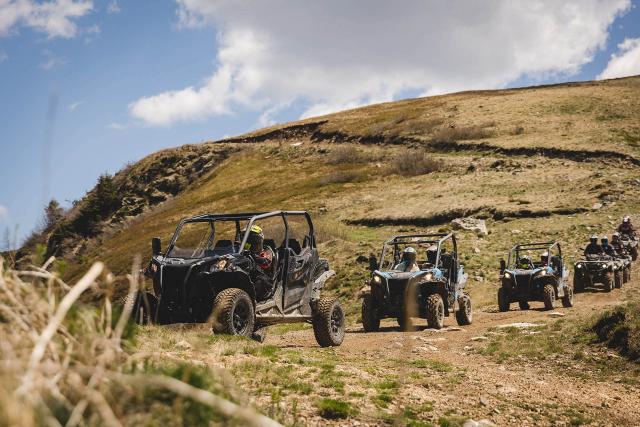
Kolašin 1600, managed by Ski Resorts of Montenegro, opened in 2019. It is roughly 30 minutes from Montenegro’s capital and is the first in a planned series of ski centers to be opened on Bjelasica Mountain. About 20 percent of its total revenue comes from non-winter tourism and activities, says CEO Đuro Milošević.
The ski area has a robust menu of summer offerings, including scenic lift rides, a base area restaurant and caffe bar, lift-served mountain biking, jeep safaris, hiking tours, horseback riding, ATV rides, a tubing park with two tracks (40 and 60 meters long), an archery park, and a paintball ground, as well as a large playground.
“As we all know, climate changes can affect all areas of tourism, and we have to rely more and more on summer mountain tourism,” says Milošević. Ski Resorts of Montenegro has a positive outlook on the next 10 to 15 years, though, with plans to expand its summer activities mix.
First on the list is the installation of a mountain coaster underneath its main K8 chairlift. Plans for the project have been accepted by the government Administration for Capital Projects, and Milošević expects it to get underway soon. The mountain coaster will travel 2.2 km (1.3 miles) from the top of the K8 chairlift at the mountain’s summit to the base of the lift. The company is also looking to build a sports field to expand the types of activities it can offer at the ski center and create a new line of revenue.
6. Sierra Nevada Ski Resort, Spain
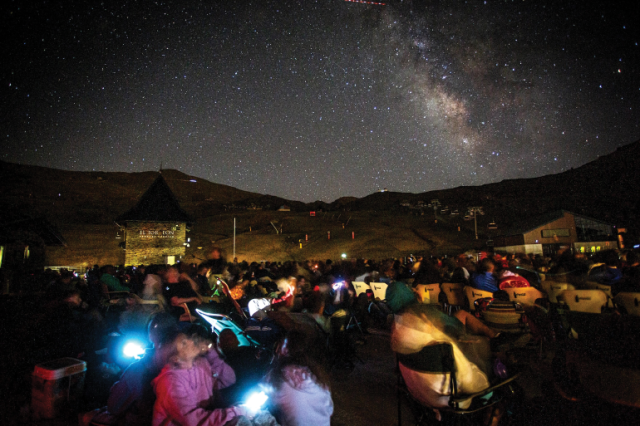
Sierra Nevada Ski Resort, within the Sierra Nevada National Park near Granada, Spain, is the most southerly ski resort in Europe. It has 24 lifts that serve roughly 70 miles of ski trails. The percentage of total revenue derived from non-winter business at the resort is “very low,” says Jesús Ibañez Peña, CEO of the resort’s ownership group Cetursa Sierra Nevada. “All the income from the summer season corresponds to a single day of a weekend in the winter season.”
The resort offers scenic gondola and chairlift rides that also provide access to hiking trails and unique geological formations like the Los Posiciones area, overlooking a glacial valley and the highest peaks in the Sierra Nevada range. Mirlo Blanco, an activity park at the base of the resort, provides family-friendly attractions like summer tubing, skateboarding, trampolines, electric go-karts, a children’s zip line, and a mountain coaster. There are additional activities at the Borreguiles mid-mountain station, which is also the site for events like stargazing nights.
To that end, “investments in ski lifts have been very important for the improvement of the customer experience,” says Ibañez, who notes that the company has to work “[with]in the dynamics of environmental, social, governance, and business sustainability.” In the next few years, he says, the company will invest in renovating the Mirlo Blanco activity area.
“We understand that the business must continue to evolve towards a stable activity over time, fighting against seasonality,” he says. As part of that effort, Ibañez plans to grow summer business with more activities in the next five to 10 years, while maintaining a culture of respect for the mountain. While winter remains the key season for the resort, “the summer is very attractive for mountain tourism,” he says, noting the impressive views and unique experiences that can be offered in summer.
JAPAN
7. Nippon Ski Resorts Development, Japan
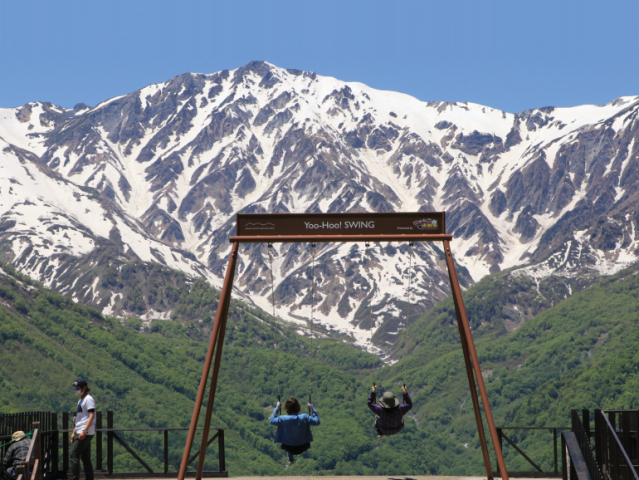
Nippon Ski Resorts Development (NSD) owns and operates eight ski resorts in Japan, primarily in the Northern Japanese Alps, including four resorts in the Hakuba Valley, famous for its bottomless powder. About 30 percent of the company’s total revenue is derived from non-winter business, says CEO Shuhei Suzuki.
Year-round business operations have helped to mitigate the risks of seasonal fluctuation, says Suzuki, and all-season sales are a component of NSD’s growth strategy. “Green season” visitation has outpaced winter visitation at some of NSD’s mountain resorts. For example, in FY 2024, Hakuba Iwatake Mountain Resort saw 228,000 green season visits to 147,000 winter season visits.
Demand for green season activities increased during the Covid-19 pandemic, and NSD has continued to cultivate that demand. At its four resorts with large cableways (e.g., gondolas and chairlifts), Suzuki says NSD is aiming to attract more than 100,000 visitors per resort by investing in new “content.” At its four resorts without large cableways, NSD is developing summer business through base area activities such as glamping and netted adventure parks, with the aim of attracting tens of thousands of visitors per resort.
The strategy is paying off, with resorts that do not operate cableways achieving record high green season visitation in FY 2024. A shift away from gardens to mountaintop terraces at resorts with cableways has also resulted in a significant increase in green season visitors. For example, the opening of the SORA Terrace observation deck at Ryuoo Ski Park boosted summer visitation more than tenfold in a four-year period.
Suzuki believes there is still more opportunity for growth. “The temperature in urban areas of Japan is likely to continue to get hotter, and since summer vacations in Japan are long, we believe we can promote further trips to the mountains,” he says. “Also, although the number of inbound visitors (i.e., foreign tourists) to our facilities in the summer is still low, there is a great opportunity to add destinations such as Hakuba, where travelers can see spectacular natural scenery, from major tourist areas such as Kyoto, Tokyo, and Osaka, and we believe there is still room for growth.”
8. Niseko Hanazono, Japan
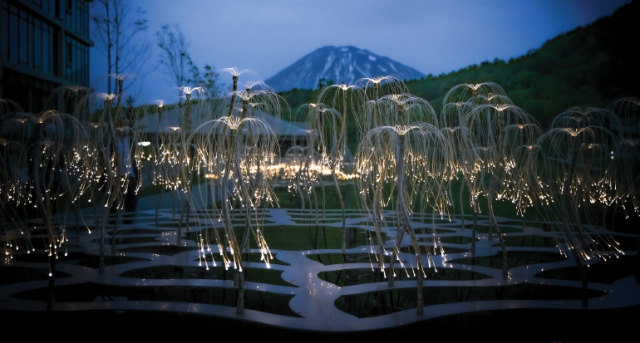
Niseko Hanazono Resort is one of four interconnected resorts on Mt. Niseko Annupuri on Japan’s northernmost island, Hokkaido. In the winter, the resort offers primarily beginner and intermediate terrain as well as a host of snow-play activities such as tubing and snow rafting. In the summer, Hanazono has a mix of onsite and offsite sightseeing and adventure activities and experiences, with about 10 percent of the resort’s total revenue deriving from non-winter business, according to director and GM Norio Kambayashi.
Among the onsite summer activities are a pay-to-play challenge course and a free canopy walk, as well as scenic gondola rides, golf cart tours, and donut boat excursions on the Hanazono Beach pond. In March 2023, the resort also launched a new zip line attraction, the Hanazono Zipflight. At 1,700 meters (approximately 5,575 feet), it is the longest zip line in Japan. That superlative attracts visitors, says Kambayashi. “[It] makes the experience very unique, so guests come visit our resort for that reason.”
Another draw: Mountain Lights, a large-scale, immersive light installation by the internationally-acclaimed British artist Bruce Munro. “This is a one-of-a-kind night/evening experience, so guests visit our resort for the sake of this activity,” he says. The installation, now in its third year of operation, runs 1.3 km (about 0.8 miles) up the summer-dormant ski trails of Hanazono and includes various light creations inspired by the topography, geology, and mythology of the region. Guests are encouraged to experience the lights from above with a gondola ride and then on foot, walking down the trail through the ticketed exhibition.
Kambayashi says the mountain’s summer operation “is expected to grow gradually and steadily.” Among the factors expected to contribute is a new hotel, which opened in December and adds another 234 beds in addition to the resort’s existing hotel. Additionally, “Hokkaido actually has a much larger tourism market in summer than in winter,” he says. “Niseko needs to tap into this existing market to grow by creating more summer content, reasons for them to choose and stay in Niseko in summertime.”
9. Hakuba 47, Japan
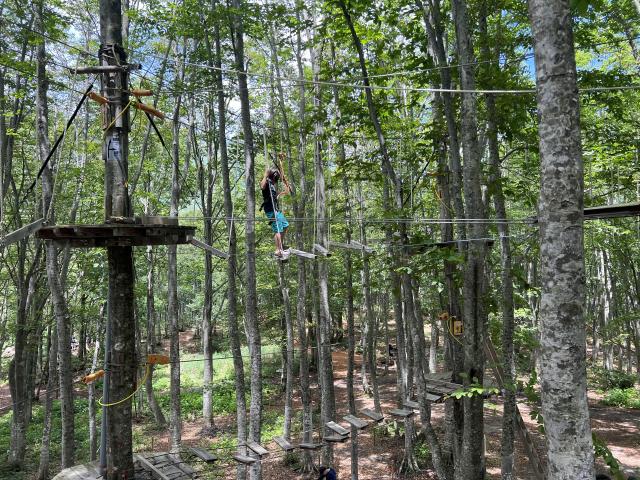
Hakuba 47 opened in Hakuba Village in the Northern Japanese Alps in 1990. Its name is a nod toward the idea that the resort can be enjoyed in all four (4) seasons, seven (7) days a week (hence 47). The ski area’s north facing aspect allows it to offer one of the longest winter seasons in the Hakuba Valley before operations turnover to green season activities, from cherry blossom viewing in May to leaf peeping in the fall.
Non-winter business accounts for roughly 15 percent of total revenue, says chairman and owner Kenta Takamori. Among the summer offerings are a climbing wall, a miniature steam locomotive, a bungee trampoline, downhill mountain biking, a mountain-top dog park, and a flower-viewing trail accessible from the top of the gondola. Also at the top of the gondola is the “Alpine Adventure” ropes course. “It was designed and developed by our staff and completely in-house, and features get added every year,” he says.
Classes and camps are another key summer offerings. The base area fronts a river, which is integrated into various programs like an introductory fishing class. Family-friendly programing has proved successful at the resort: “We have a popular, instructor-led, overnight camping program for parent and child with zero-to-low camping experience with the dramatic-sounding name ‘Survival Camp,’” says Takamori. The resort also hosts school groups and youth sporting teams for summer trips.
Takamori sees an opportunity to turn more winter guests to summer visitors. “Hakuba has been steadily gaining recognition as a winter destination, and this has led to more winter guests wanting to have a connection with Hakuba in the green season,” he says. “The mountain views are stunning, it is a bit cooler than in Tokyo, and very easy to get to. Over the next 5-10 years, as Hakuba sees more visitors, there will be increased investment in summer operations, leading to a positive cycle.”
AUSTRALIA
10. Mt Buller, Australia
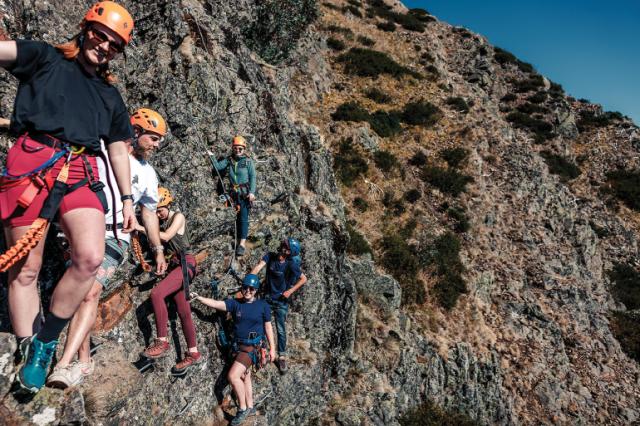
A new via ferrata led to a bump in summer business at Australia’s Mt Buller. The alpine resort, three hours outside of Melbourne, has roughly 750 skiable acres served by 19 lifts and a village with 7,000 on-mountain beds. “Non-winter trade represents a very small amount of total revenue,” says summer activations manager Florian Tabelander, “however, we are trying to increase this share year-on-year.”
As part of the effort to grow its summer business, Mt Buller, which also offers XC and gravity-fed mountain biking, hiking, and events, opened Australia’s first alpine via ferrata in February 2024. “With via ferrata-style climbing being very popular in other parts of the world, we saw increased interstate travel to Mt Buller in our inaugural season,” says Tabelander. The via ferrata, constructed by Australian mountaineer James Webb, launched with a single introductory route “suitable for novices and school groups,” says Tabelander. A second route geared toward more advanced climbers was scheduled to open near the end of December 2024.
Looking ahead, Tabelander says he is confident that summer operations will continue to increase in significance, “not only for financial reasons, but also to retain key staff year-round and sustain local communities in often remote areas.
“For the most part, summer operations among Australian ski resorts play a small role in the overall picture,” he continues. As Australia’s population increases and visitors seek alternative experiences to the beach and cities, “domestic resorts have an opportunity to step up and offer a cool escape during hot summers. Tapping into those markets will require product innovation or, in other words, creating year-round experiences with low entry barriers for the whole family—something that we at Buller Ski Lifts are working towards.”
11. Thredbo, Australia
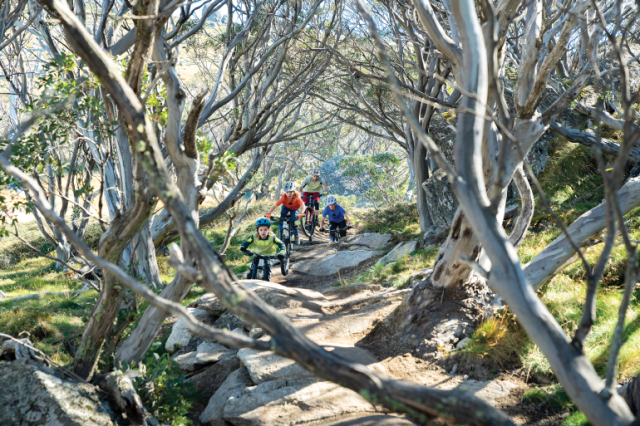
Thredbo, a ski resort in New South Wales with 1,200 skiable acres and some of Australia’s longest ski runs, has a robust summer operation. The resort offers mountain biking, scenic gondola and chairlift rides, hiking, fly fishing, an Olympic-sized swimming pool with waterslide, a sports hall and leisure center, guided 4WD tours, a golf course, tennis, a skate park, abseiling, bungee trampolines, and a wide range of summer events. Non-winter business currently accounts for 20 percent of total revenue, says general manager Stuart Diver.
New to the operation as of June 2024 is a mile-long Wiegand mountain coaster that will serve as a year-round attraction. The resort says it’s the first alpine coaster in the Southern Hemisphere. It is open to participants as young as 3 years old (riding with an adult), and riders can reach speeds of up to 25 mph. “It has been hugely popular and has increased visitation in quieter periods,” says Diver.
Mountain biking has also been a strong segment of Thredbo’s summer business, with steady growth over the last 10 years, he says. The offering is a key component of the resort’s summer strategy, and “[w]e are continuing to invest in new trails, and now run four chairlifts specifically for MTB access,” says Diver.
He expects that investment will pay off. “I think that summer business will continue to grow based on our continued investment in current activities and in new attractions. We are looking at a zip line installation for summer 2026 and will continue to look at new ways to attract summer guests. It’s all about experiences that guests can’t get anywhere else.”





